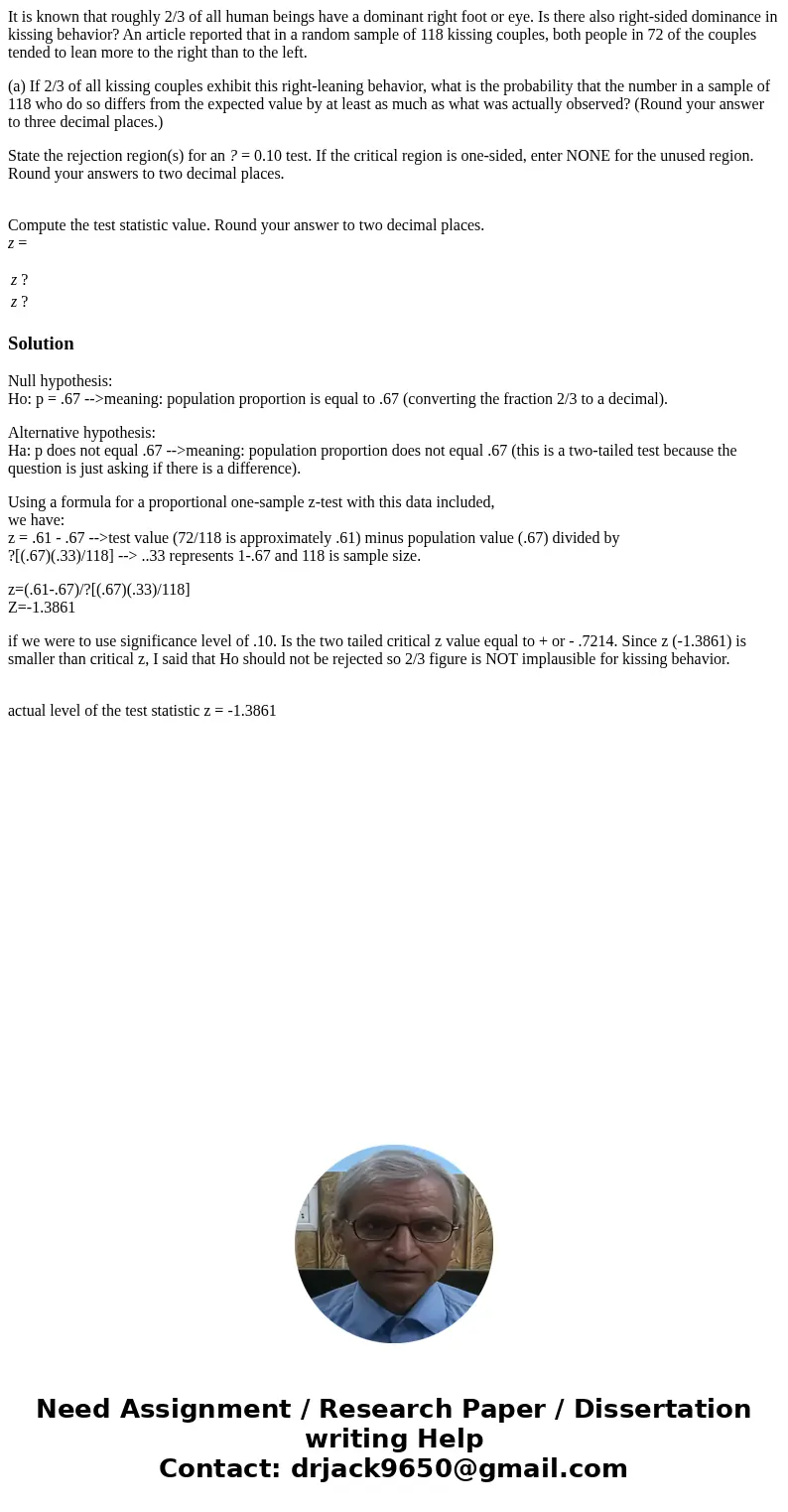It is known that roughly 23 of all human beings have a domin
It is known that roughly 2/3 of all human beings have a dominant right foot or eye. Is there also right-sided dominance in kissing behavior? An article reported that in a random sample of 118 kissing couples, both people in 72 of the couples tended to lean more to the right than to the left.
(a) If 2/3 of all kissing couples exhibit this right-leaning behavior, what is the probability that the number in a sample of 118 who do so differs from the expected value by at least as much as what was actually observed? (Round your answer to three decimal places.)
State the rejection region(s) for an ? = 0.10 test. If the critical region is one-sided, enter NONE for the unused region. Round your answers to two decimal places.
Compute the test statistic value. Round your answer to two decimal places.
z =
| z ? | |
| z ? |
Solution
Null hypothesis:
Ho: p = .67 -->meaning: population proportion is equal to .67 (converting the fraction 2/3 to a decimal).
Alternative hypothesis:
Ha: p does not equal .67 -->meaning: population proportion does not equal .67 (this is a two-tailed test because the question is just asking if there is a difference).
Using a formula for a proportional one-sample z-test with this data included,
we have:
z = .61 - .67 -->test value (72/118 is approximately .61) minus population value (.67) divided by
?[(.67)(.33)/118] --> ..33 represents 1-.67 and 118 is sample size.
z=(.61-.67)/?[(.67)(.33)/118]
Z=-1.3861
if we were to use significance level of .10. Is the two tailed critical z value equal to + or - .7214. Since z (-1.3861) is smaller than critical z, I said that Ho should not be rejected so 2/3 figure is NOT implausible for kissing behavior.
actual level of the test statistic z = -1.3861

 Homework Sourse
Homework Sourse